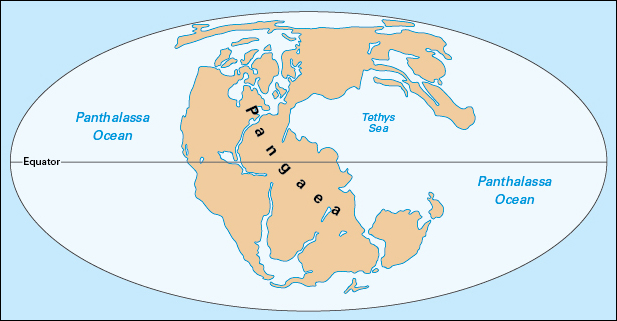Pangaea << pan JEE uh >> is a giant continent that most scholars believe existed about 200 million years ago. Geologists often refer to Pangaea as a supercontinent because it contained nearly all of Earth’s land. The name Pangaea comes from the Greek words meaning all earth or all land. It is sometimes spelled Pangea.

Two connected land masses made up Pangaea. The southern region, called Gondwanaland, included what are now South America, Africa, India, Australia, and Antarctica. The northern mass, known as Laurasia, consisted of what are now North America, Europe, and Asia. A large, wedge-shaped gulf called the Tethys Sea filled the angle between Laurasia and Gondwanaland. A single giant ocean called Panthalassa surrounded Pangaea.
Pangaea formed from 500 million to 200 million years ago from a series of collisions between smaller continents. About 200 million years ago, Pangaea began to break up as Laurasia split from Gondwanaland.
The German meteorologist Alfred Lothar Wegener first proposed the existence of Pangaea in 1912 as part of his theory of continental drift. The theory held that all of the continents had once been closer but had moved away from one another.
Drifting continents
See also Earth (The shaping of the continents) ; Mediterranean Sea (Formation) ; Plate tectonics .
